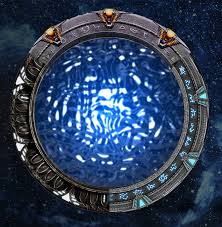- cross-posted to:
- chevron7@lemmy.world
- cross-posted to:
- chevron7@lemmy.world
cross-posted from: https://lemmy.ml/post/19018726
Ran into this recently and was really impressed. The Stargate Project (website) is by Kristian Tysse (youtube).
Seeing it side by side, the whole thing makes no sense. There should be nothing happening on the other end until all chevrons are dialed in, since they are supposed to be part of a navigational coordinate to determine which gate to call. So realistically the first gate should lock in the chevrons,
as the second gate starts to do the same after receiving a request in order to confirm the connection, and only then both gates should establish the wormhole.
Some more food for thought,
S03E19 - New Ground | How does the destination gate get locks as it’s being dialed on Earth?
I’ve been through SG-1 a few times, and I don’t think there’s ever really an answer for this. How the heck does the destination gate have locks happening as the dialer back on Earth is dialing? That’s like if the person I was planning to call got notifications that I was typing each digit of their phone number before I’ve finished dialing it. It doesn’t make any sense!
You’re right, it doesn’t make sense, and I haven’t seen any explanation that plugs up all problems. Presumably it just looks cool 😅 The best I can think of is that, when they show one gate dialing in a chevron at a time + the receiving gate activating one chevron at a time, those aren’t meant to be happening simultaneously. Any shots of the receiving gate are supposed to have occurred a little in the future: Imagine you dial your friend and you type in one digit at a time. Once you’ve got them all dialed in and click Call, your friend’s phone lights up saying “you’re receiving a call!” Then they see the first digit light up, then the second, etc. If someone wanted to film this and make it look more dramatic, they might film you typing in the numbers, then film your friend’s phone lighting up one digit at a time, and then splice together the shots to make it look like the numbers are lighting up on your friend’s phone as you type them. And that’s what we see on screen. I seem to remember people pointing out reasons why this still doesn’t work as an explanation, but I don’t remember what the evidence was. Maybe we’ve seen cases where the dialing sequence was aborted on the calling end, yet we still saw chevrons light up on the receiving end?
Yeah…Thinking this through… So the sending gate dials one by one, immediately followed by a kawoosh (we never observe any major delay between locking the final chevron and the wormhole opening). The receiving gate receives the notification that it’s about to have a wormhole open, and starts seeing chevrons engage one by one. Before the sequence completes, the someone on the receiving end manages to dial out, blocking the incoming wormhole. So that means the sending gate saw a kawoosh…but no kawoosh ever occurred on the receiving end. The wormhole never finished forming. So what happens to anything that entered the wormhole in those few seconds before the receiving gate managed to dial out? I see two possibilities:
- Anything that entered the wormhole before the receiving gate managed to block the signal is destroyed. It just dead-ends out in space, as subatomic particles or energy or whatever.
- The wormhole bounces back, sending any such objects back to their origin gate. Either one of those seem plausible to me, but I wouldn’t be surprised if there’s more stuff in the show that makes this not work.
Isn’t there an episode where a gould is dialing in and blasting the iris? Like, he dials in faster than they can establish a wormhole connection themselves, and then sends shit through, blasting the iris and heating it up(because the iris is like one atoms space away from the event horizon). When he starts dialing in, they only have X seconds to try to dial out themselves.
Now here’s where my memory is fuzzy: Samantha reprograms the gate dialing software to dial faster. Faster than a traditional dialer can. They talk about “we only have X time between gate closing and when he can dial back”. I seem to remember them trying to dial out during that time, locking chevrons in, and then the sequence being overridden by the incoming gould connection. So wed see like 5 chevrons lock, then it would suddenly break and be that other incoming call. They had to dial out BEFORE that call incoming connected. So they were locking in chevrons on Earth side for a call out while a call was being placed to earth from elsewhere. So chevrons CANT lock simultaneously or you couldn’t do that. It has to be one after the other.
deleted by creator
It just looks cool is the likely answer here. Gate dials were always kind of tension building, and having to wait for a connection would be more than just anticlimactic. Though this could’ve been probably solved by designing the waiting period as another “building up” thing, like some intense swirling noise and vibrations intensifying instead of the phone example or some elevator music playing.
The chappa’ai!
Oh, this is cool :o



